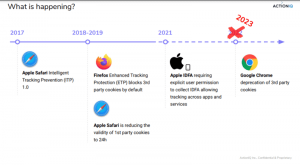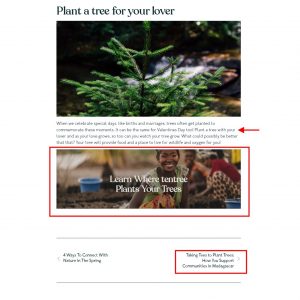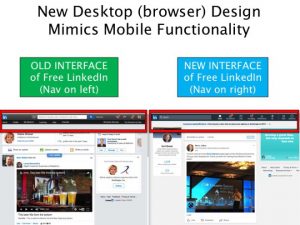How Outdated Hiring Practices Can Derail Your Recruitment Efforts

Too often, recruitment departments are sidelined as simply a call center or cost function of a business, with the sole purpose of getting people to attend interviews and accept offers. This attitude and practice couldn’t be further from the truth, as quality hiring provides the foundations for cohesive and successful teams. Many companies stick to old hiring processes, which often prevent their recruiters from getting their hands on top talent.
Outdated Hiring Practices Can Derail Your Recruitment Efforts
This year, an astonishing 82% of US employers are planning to hire new people. Yet, recruiters still face an uphill struggle to find the right fit: 61% of recruiters say that their biggest challenge is finding qualified experienced hires. It’s time for businesses holding onto outdated hiring practices to scrap them completely—and start seeing recruitment as the strategic function it is.
Though, of course, getting rid of outdated practices means replacing them with new ones. There are four core areas where hiring needs innovative, new solutions: talent discovery, candidate experience, data and reporting, and talent decision making.
Let’s dive into which age-old practices should be resigned to the history books, and how companies can leverage technology to strategically drive their hiring efforts.
The Right Tools to Power Top Talent Discovery
Many recruiters are still manually searching for quality candidates on job boards, but it’s difficult for them to be an expert in all the job roles they are expected to fill.
A lack of understanding of the position on the recruiter’s part leads to missing out on good candidates.
For example, if potential candidates don’t use the exact keywords that the recruiter is searching for, they might slip through the cracks.
Here’s where technology can help. AI-powered resume screening tools can parse through resumes, use past data on successful hires, identify the top applicants, and put them through to the next stage of the hiring process.
Getting to the next stage boosts the potential for recruiters to find the best candidates, as they are no longer relying on their own intuition—they have the historical data of hundreds if not thousands of applicants to rely on.
In addition to AI, other methods of technological advancements in the recruitment space have made finding the right candidate for the right role a more seamless process. For example, some recruitment methods in the area of travel nursing couple the organizational power application software with the human touch of a recruiter to guide nurses toward their chosen specialty in a location that needs them most.
How to reduce the chance of bias
One crucial thing to note here is that to minimize the chance of bias, it’s important to keep track of any tendencies that might emerge as a result of skewed data and adjust the algorithm accordingly. We all remember Amazon’s sexist recruitment tool and how that turned out.
Candidate Experience: From Disjointed to Seamless
Candidate experience has never been more critical than in the virtual realm. And with 80% of respondents to our Remote Hiring Trends 2021 survey saying their interviewing and hiring process is now fully remote, this means stepping away from disjointed technology experiences and building a seamless funnel for candidates.
The truth may be harsh, but it’s important to hear: Organizations that are still using multiple recruitment management systems and interviewing tools neglect their candidate experience.
In dealing with all of these different platforms at different stages of the hiring funnel, candidates often get confused and disillusioned with the sheer number of platforms they’re grappling with.
The applicant might interact with the applicant tracking system to submit the application, complete an assessment on a separate tool, take the video interview on Zoom or Google Meet, and manage communications via email.
Now the recruiter’s multiple tools
Meanwhile, on the other side, the recruiter is also forced to deal with multiple tools and switch between platforms to gather information, inevitably impacting efficiency in the process. Having this data strewn across different platforms makes it more difficult to locate, and can result in recruiters missing it completely.
The answer here is simple: Organizations that invest in an all-in-one platform that takes care of everything.
An all-in-one platform is going to save you a ton of money in the end. You want your platform tool to take you from screening to interviewing. You will set yourself and your company apart from your peers when it comes to candidate experience while making life significantly easier for hiring teams too.
These tools can automate the process from one stage to the next.
For example, they can automatically schedule an interview for someone who passed the skills assessment or automatically sends an offer email to someone who was successful in their final interview.
Not to mention, adopting a single tool allows companies to curate the online environment to match their own branding, which is crucial for consistency and professionalism in the candidate’s eyes.
Organizations that adopt whitelabel recruitment platforms can create a more accurate image of their company in the absence of a physical workplace to visit.
Data is King — for Recruiters Too
The reality is the majority of recruiters do not have access to comprehensive data insights to drive decision-making. And that needs to change.
Recruitment often gets short-changed when it comes to investing in data and reporting technologies.
There has historically been a lack of emphasis on leveraging data insights within the function to drive strategic decisions, unlike other departments like Sales or Marketing, which are equipped with such technological capabilities as standard.
However, data and reporting are crucial for successful hiring, and the often sidelined business function of recruitment shouldn’t be left out of the data revolution.
Actionable insights can drive recruitment decisions.
Consider the time an average candidate spends in the hiring funnel. Look at the rate of high-quality candidates from various sources and all the data about the candidate. Each step in the information process takes time. Look at your application form conversion rates — and each candidate experience scores.
Armed with these insights, recruiters will be able to determine the success of their hiring efforts.
You’ll want to ensure they are reaching diverse groups, evaluate their candidate experience, and more. Especially given the importance of diversity and inclusion (one of Monster’s key hiring trends for 2021), companies must leverage data insights to support these efforts.
Remove the Bias in Talent Decision Making
Humans are inherently subjective beings—and the same goes for recruiters, no matter how fair they determine themselves to be. This, in turn, means that decisions made in large part based on interviews are ultimately subjective.
There are several different unconscious biases that the interviewer could exhibit in that process. Unconscious biases can include:
- affinity bias (when you prefer people who share qualities with you or someone you like).
- attribution bias (our flawed ability to assess the reasons for certain behaviors)
- conformity bias (allowing your views to be swayed by others).
Unknowingly, recruiters often take a pass on qualified applicants and take on unfit ones, all because of their internal biases.
What’s more, much of the data on candidate interview performance is not captured and used holistically and assessed objectively to make decisions. Rather it exists in bits and pieces across platforms and documents, further convoluting the process.
Behavioral insights
AI-powered interview platforms can provide objective behavioral insights to recruiters during video interviews and fairly assess candidates’ soft skills and learnability.
These tools augment the human decision-making power as they highlight areas where the interviewer’s judgment may be biased.
Advanced AI platforms can evaluate interviewer performance, providing data on time spent on each interview topic, the time the interviewer spent talking vs. the candidate, or whether or not inappropriate questions were asked.
All of this enables the interviewer to identify gaps in their approach and drive their performance.
Conclusion
It’s time for recruitment departments to leave age-old practices at the door and embrace technology to advance strategic hiring. With the growth of virtual hiring and remote work showing no sign of abating, what better time to start than now?
The post How Outdated Hiring Practices Can Derail Your Recruitment Efforts appeared first on ReadWrite.
(27)
Report Post





